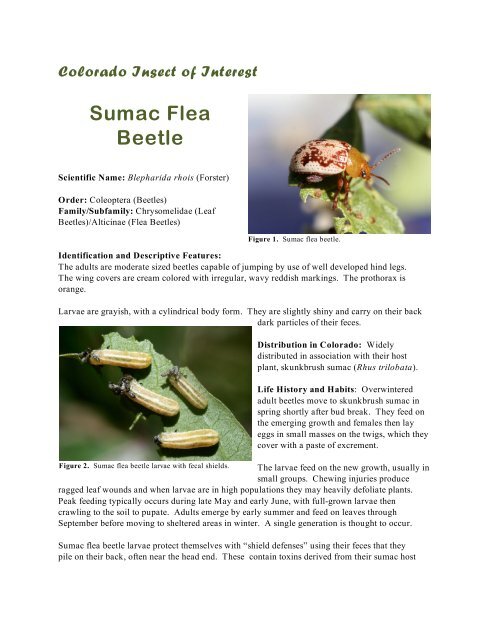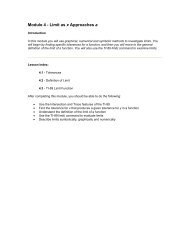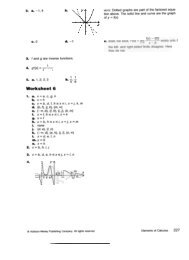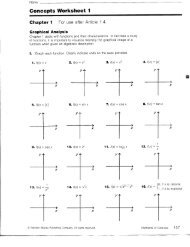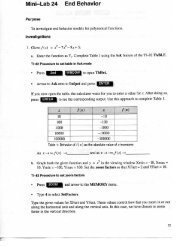Sumac flea beetle
Sumac flea beetle
Sumac flea beetle
You also want an ePaper? Increase the reach of your titles
YUMPU automatically turns print PDFs into web optimized ePapers that Google loves.
Colorado Insect of Interest<strong>Sumac</strong> FleaBeetleScientific Name: Blepharida rhois (Forster)Order: Coleoptera (Beetles)Family/Subfamily: Chrysomelidae (LeafBeetles)/Alticinae (Flea Beetles)Figure 1. <strong>Sumac</strong> <strong>flea</strong> <strong>beetle</strong>.Identification and Descriptive Features:The adults are moderate sized <strong>beetle</strong>s capable of jumping by use of well developed hind legs.The wing covers are cream colored with irregular, wavy reddish markings. The prothorax isorange.Larvae are grayish, with a cylindrical body form. They are slightly shiny and carry on their backdark particles of their feces.Distribution in Colorado: Widelydistributed in association with their hostplant, skunkbrush sumac (Rhus trilobata).Life History and Habits: Overwinteredadult <strong>beetle</strong>s move to skunkbrush sumac inspring shortly after bud break. They feed onthe emerging growth and females then layeggs in small masses on the twigs, which theycover with a paste of excrement.Figure 2. <strong>Sumac</strong> <strong>flea</strong> <strong>beetle</strong> larvae with fecal shields. The larvae feed on the new growth, usually insmall groups. Chewing injuries produceragged leaf wounds and when larvae are in high populations they may heavily defoliate plants.Peak feeding typically occurs during late May and early June, with full-grown larvae thencrawling to the soil to pupate. Adults emerge by early summer and feed on leaves throughSeptember before moving to sheltered areas in winter. A single generation is thought to occur.<strong>Sumac</strong> <strong>flea</strong> <strong>beetle</strong> larvae protect themselves with “shield defenses” using their feces that theypile on their back, often near the head end. These contain toxins derived from their sumac host
and this defense protects them well from ants and many other potential predators. The coveringfecal shields produced by the mother also protect the eggs.Figure 3. <strong>Sumac</strong> <strong>flea</strong> <strong>beetle</strong> egg masses laid on askunkbrush twig.Species of Similar Appearance: Some leaf<strong>beetle</strong>s of the genus Calligrapha have theapproximate size and shape of the sumac <strong>flea</strong><strong>beetle</strong>. Among the more common species thatare present in Colorado are Calligraphamultipunctata (Say), associated with willow,and Calligrapha lunata (Fabricius), associatedwith Rosa. Plants of the genera Ambrosia,Coreopsis, and Bidens host Calligraphacalifornica coreopsivora Brown and C.bidenticola Brown. Patternings on the backand their inability to jump can distinguish thesefrom sumac <strong>flea</strong> <strong>beetle</strong>.


